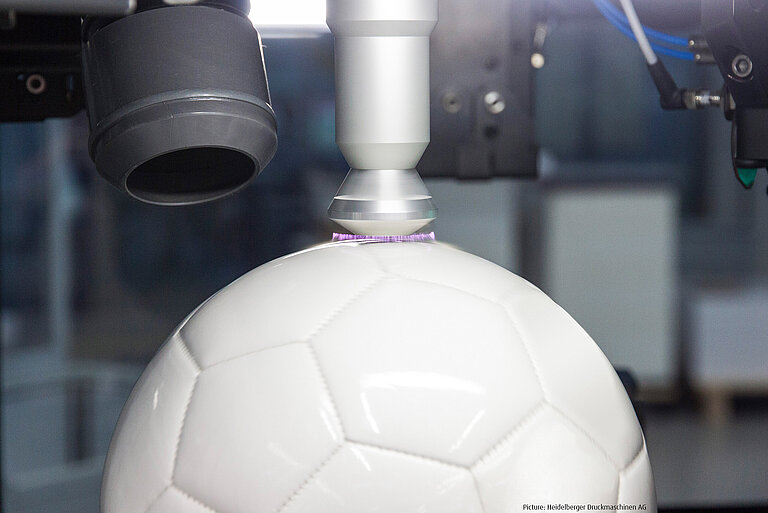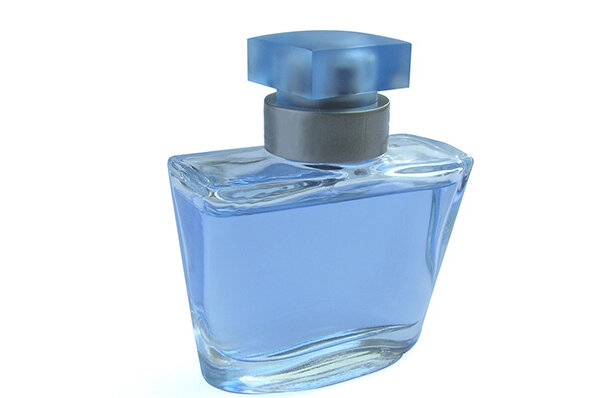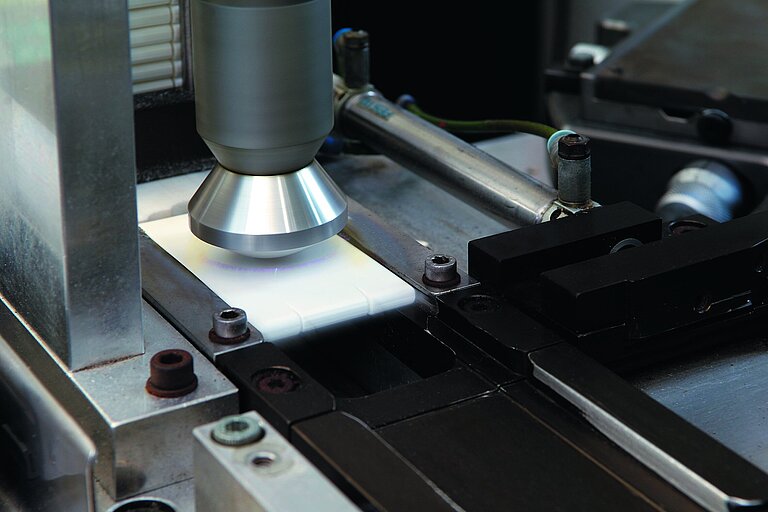Openair-Plasma® for improved ink adhesion and outstanding print quality
Openair-Plasma® technology is used as part of all the common printing processes like pad printing, screen printing, and offset printing. Plasma pretreatment makes print adhesion of solvent-free inks possible, as well as secure long-term adhesion when printing difficult surfaces like polypropylene (PP), polyethylene (PE), polyamide (PA), polycarbonate (PC), glass and metals. Openair-Plasma's® high efficiency makes it possible to significantly increase machine speeds. When tubs or tubes are printed, an increase in processing speeds of up to 30% can be achieved.
Better ink bonding by using Openair-Plasma® treatment before printing achieves increased aging resistance, high resistance to handling and weathering, excellent ink brilliance, and flawless application of printing inks. In contrast to the corona process, the uniform, potential-free effect of atmospheric plasma pretreats even thermally sensitive surfaces without damage.
Adhesion and color brilliance for UV digital printing on plastics and glass

UV digital printing offers many advantages which make it an increasingly popular option in industrial printing processes. These include its process speed and ability to handle both high and low-volume production runs and personalized custom prints (see video) quickly and affordably.
Openair-Plasma® creates the ideal conditions for UV digital printing entirely without the need for additional adhesion promoters – even with water-based inks. Complete wettability of the printing surface is essential for the effective adhesion of solvent-free inks. Openair-Plasma® achieves this level of wettability through the highly effective microfine cleaning and activation of the surface to ensure long-time stable print adhesion.
Ideal conditions for UV digital printing on elastomers

Plasma activation increases the surface energy of the substrate by making elastomers such as soft PVC and PUR, thermoplastics such as PC, PE and PP and other non-polar plastics polar. Homogenous surface wettability is of paramount importance for printing processes such as UV inkjet digital printing, where the end result is largely determined by the way in which ink droplets strike the substrate and spread.
The resulting print adhesion is considerably enhanced compared with untreated substrates. The imprint is significantly more wear- and moisture-resistant. The printed image itself has an impressive level of sharpness and color brilliance.
PROPERTIES &
ADVANTAGES
of plasma treatment for UV digital printing
- increased sharpness and resolution of the printed image
- increased color brilliance and intensity
- extremely durable: improved adhesion equates to enhanced moisture and scratch resistance
- significant savings on inks/raw materials
Plasma pretreatment ensures homogenous wettability in pad printing

Secure ink adhesion and a clean print image on PP packages of mints thanks to inline plasma activationBedrucken von Mintcards.
Pad printing is typically used to print lettering, inscriptions and decorative elements with small, fine motifs. Like the printing process itself, Openair-Plasma® pretreatment can be used on a wide variety of materials, surfaces and shapes.
The microfine cleaning action and strong activation power of Openair-Plasma® ensures stable adhesion and a high-quality printed image even with complex shapes and materials that are difficult to print. Plasmatreat’s patented rotary nozzle technology ensures the reliable, homogenous wetting of flat as well as convex and concave surfaces, even with irregular features and recesses, with printing inks.
We view the use of the Openair-Plasma® process in automated pad printing as positive in all respects.
PROPERTIES &
ADVANTAGES
of plasma technology for the printing process
- high process reliability and reproducibility
- dry in-line process: easy to automate
- microfine cleaning (no particle contamination) and simultaneous activation
- suitable for small and large surfaces
- cold process: no thermal input
- versatile: suitable for pretreating flat materials and three-dimensional objects
- environmentally friendly: runs on compressed air, no VOC emissions





